Rapid Innovations in Healthcare Technology
The virtual healthcare space has been of increasing importance as times have moved forward. Healthcare providers are constantly bombarded with transcribed notes, data, statistics, reports, and more – information that needs to be digitally sifted through and organized in order to be of use and understood. The urgency that the pandemic presented jumpstarted the innovations that were already beginning to transform healthcare. AI (Artificial Intelligence) and NLP (Natural Language Processing) were no longer a distant possibility – they were a pressing need.
AI and NLP provide a bridge between healthcare and technology in a number of ways. AI can be used to deploy virtual healthcare assistants, driving cost-reduction efforts as well as helping medical professionals make the most of their time. While AI cannot replace medical professionals, it can ease the burden of their already demanding responsibilities. It can use large-scale data to quickly and accurately analyze symptoms and more, giving physicians more time to devote to other significant tasks.
NLP can help to make sense of unstructured or complex text. It does the busy work by sorting through that text, identifying words and phrases to help physicians to streamline their understanding and speed in diagnoses and prescriptions. This allows for improved communication between researchers, data analysts, medical professionals, and even software vendors, increasing efficiency and communication within the healthcare ecosystem.
We’re only just beginning to see the effects of these technologies. It will take time to consolidate all of the data that exists in the healthcare space. Eventually, though, we will see a new age in speed, accuracy, and efficiency in healthcare technology that will take us to new and unimaginable heights.
Sources:
















